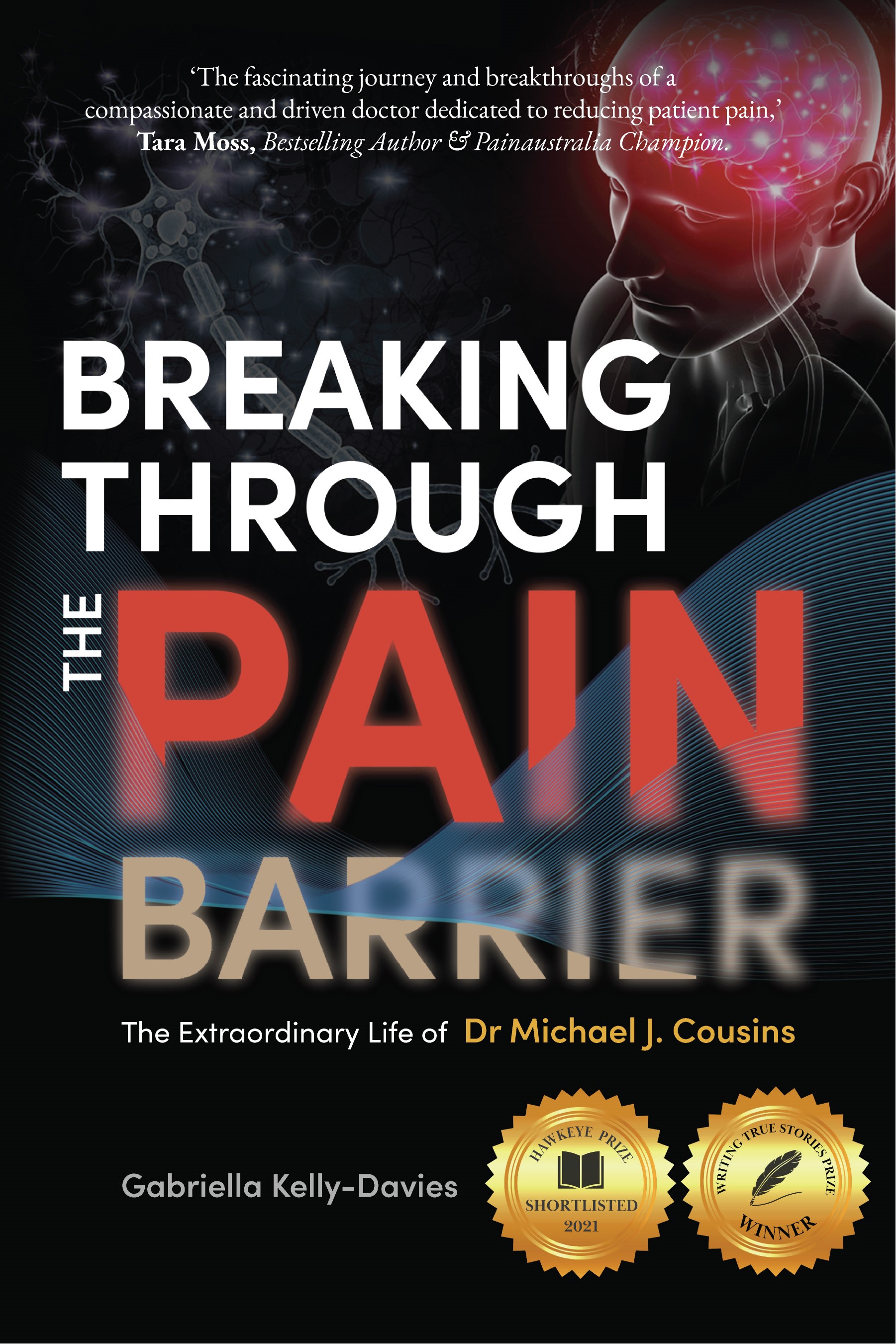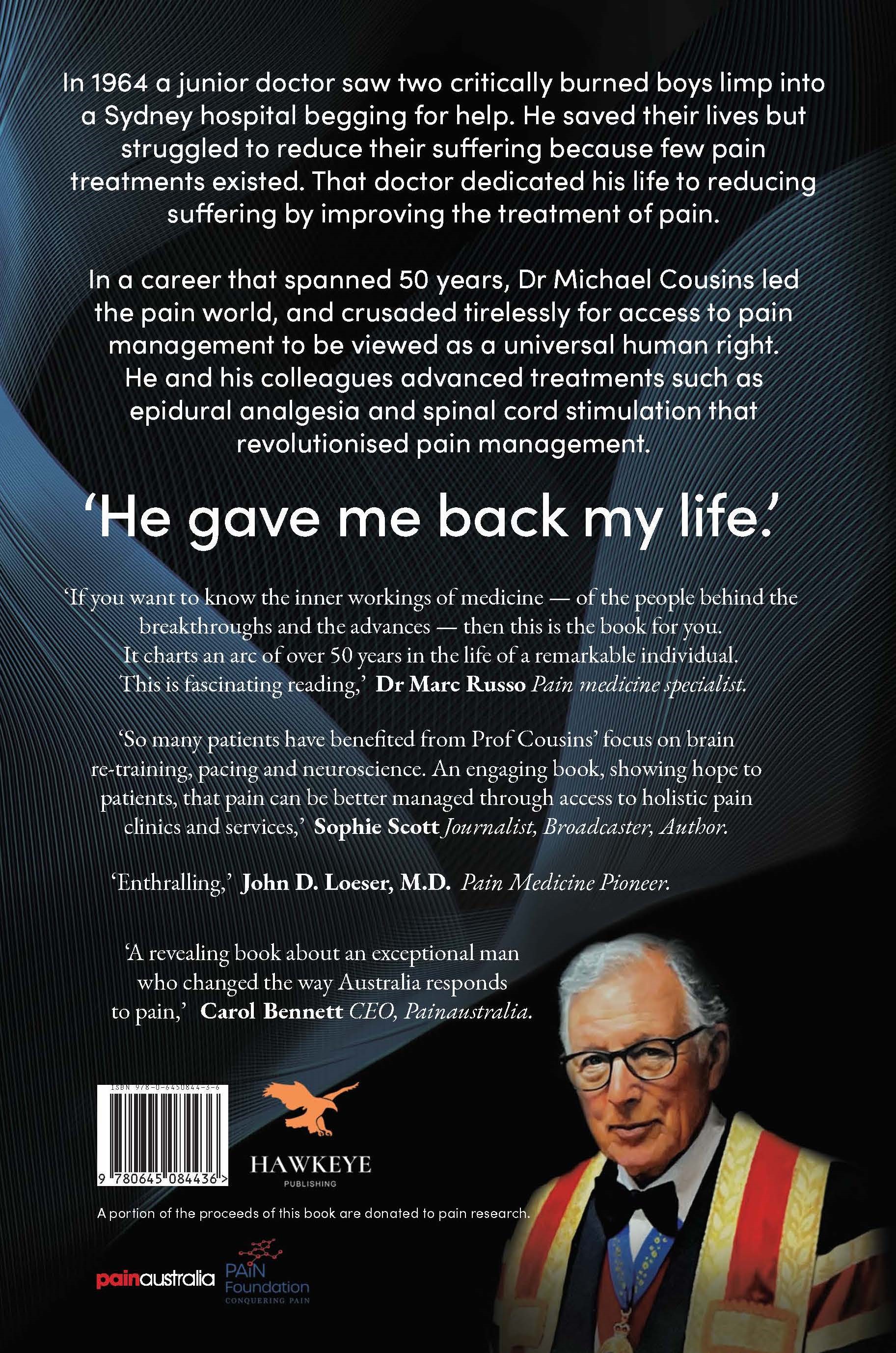July 25 - 31, 2021: Issue 503
Biography Celebrating Inspirational Pain Medicine Pioneer Dr Michael J Cousins AO Launched
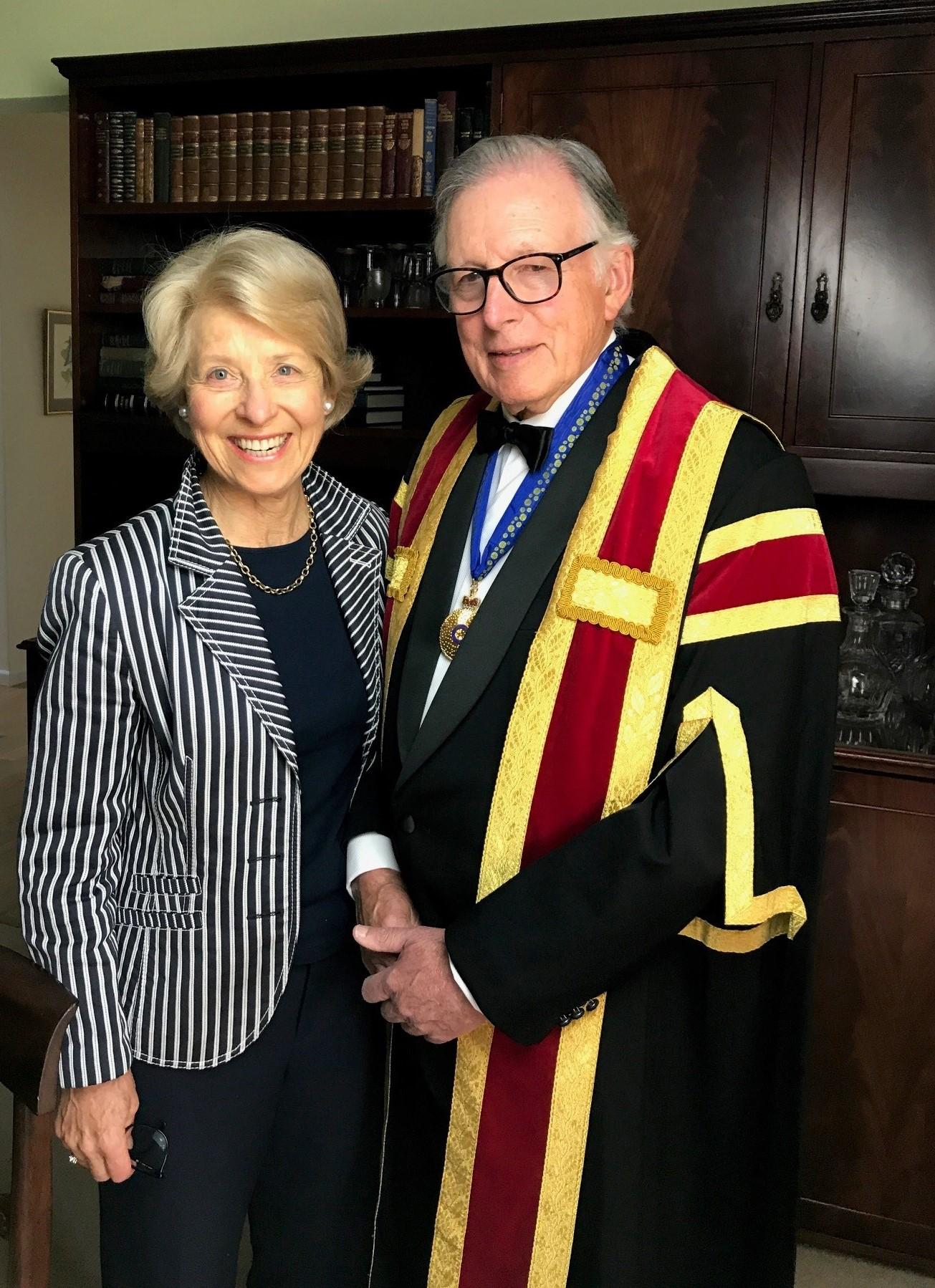
One Saturday night in 1964 as a junior doctor, Michael Cousins saw two critically burned boys at a Sydney hospital begging for help. He saved their lives but struggled to reduce their agony because few pain treatments existed back then. That weekend Michael Cousins dedicated his life to improving the treatment of pain.
Ahead of National Pain Week from July 26th to August 1st, Painaustralia is launching the biography of its founder and pain medicine pioneer Dr Michael J Cousins AO on Sunday, 25 July at 10am.
Breaking through the pain barrier. The extraordinary life of Dr Michael J. Cousins by biographer Gabriella Kelly-Davies explores the way historic events shaped Dr Cousins and how he in turn shaped international pain research, treatment and policy.
Born in Sydney in 1939 Michael studied Medicine at the University of Sydney. After graduating in 1963, he completed his Residency at the St George Hospital and undertook specialist training in Anaesthesia at the Royal North Shore Hospital. He was awarded a University of Sydney Post Graduate Fellowship to carry out research on Acute Pain Management which gave him the opportunity to work with one of the pioneers in the field, Professor Philip Bromage, at McGill University in Montreal, Canada.
Dr. Cousins says of this time:
''Philip Bromage was pioneering the use of epidural pain relief for patients suffering from pain associated with major trauma. His concept was to achieve optimal pain relief without sedation so that patients could quickly regain normal function. This was a very early version of one of the major research themes today which is to favourably modify the injury response so that recovery can be facilitated Professor Bromage's ideas had a major influence on my future research. Bromage was also very interested in improving pain relief after major surgery and was most supportive of my very first piece of research which was to study pain relief and blood flow following major lower limb vascular surgical operations. In this first study, I demonstrated that effective pain relief was associated with an improvement in blood flow through the surgical graft. In retrospect, this was probably one of the first studies to document a parameter other than pain in association with a major method of pain relief.''
From 1970 to 1974, he was Assistant Professor of Anaesthesia at Stanford University in California, there collaborating with Professor Richard Mazze in studies of the metabolism and kidney toxicity caused by the inhalation anaesthetic agents. He was awarded a Doctorate in Medicine from the University of Sydney for this work.
While at McGill and Stanford Universities, he interacted with three of the pioneers of the field of Pain Medicine, Ronald Melzack and Patrick Wall, who in 1965 proposed the revolutionary 'Gate Control Theory of Pain', and John J Bonica the Founding Father of the 'team approach' to pain management. According to Michael:
''The 'Gate Control Theory' revolutionised the study of pain and continues to be a stimulus for much of the work that is currently performed. Previously, pain had been regarded purely as a sensation with nerve impulses travelling in a unidirectional manner from the body surface to the brain. Melzack and Wall proposed that modulation occurred in the spinal cord and at other levels of the central nervous system to modify the pain stimulus in a major way. In other words, there was a descending system that ran in the opposite direction to pain impulses ascending to the brain. Our current NHMRC Program Grant is supporting a series of interlocking studies which are providing a detailed map of the important targets on the body surface, the spinal cord and more central areas of the neuraxis, that form different components of the 'Gate Control System'. Patrick Wall visited our Centre shortly before he died.''
The 'Gate Control Theory' continues to be cited at a very high level.
These and other key interactions at Stanford University in the early 1970s, spurred Michael's decades of research, teaching, clinical innovation and development of the field of Pain Medicine in Australia and Internationally.
In 1975 Dr. Cousins became Foundation Professor of the Department of Anaesthesia and Intensive Care at Flinders University of South Australia. This was the first Chair of Anaesthesia and Intensive Care in Australia and the first with a major focus on basic and clinical research. While in Adelaide he also established the first multidisciplinary centre for Pain Medicine at Flinders Medical Centre.
Returning to Sydney in 1990, Michael was appointed Foundation Professor and Head of Anaesthesia and Pain Management at the Royal North Shore Hospital, within the Faculty's Department of Anaesthesia. In this capacity, he again established a large multidisciplinary centre for the study and treatment of Pain Medicine, the Pain Management Research Institute (PMRI). Like the Flinders Centre, this new Centre has become internationally recognised for clinical care, teaching and research. In 1998 the University of Sydney PMRI was recognised by the National Health and Medical Research Council (NHMRC) of Australia as one of only eight 'Centres of Clinical Excellence in Hospital Based Research' among all medical research disciplines across Australia. Dr. Cousins also fostered the development of the Sydney Medical Simulation Centre, based at Royal North Shore Hospital.
Michael drove the development of the University of Sydney's diploma and master's course in Pain Management, which now enrols students from around the world in its unique education program. In 2011 he founded a new discipline of pain management at the University of Sydney, the Department of Anaesthesia and Pain Management, the first in the world. Prior to this, he assisted in the training of more than 75 key individuals in Pain Medicine and in the setting up of resources and facilities for new pain medicine centres throughout Australia, in the Asia Pacific region, Europe, Canada and in the USA. He chaired the NHMRC Working Party (1995–1999) which developed Australia's first 'evidence-based medicine' guideline on the Management of Acute Pain, a document now used throughout Australia and internationally.
In Australia, Michael has been the Founding President of the Australian Pain Society (1979), Chairman of the Joint Advisory Committee on Pain Medicine of the specialist College of Anaesthesia (ANZCA), Medicine (RACP), Surgery (RACS), Psychiatry (RANZCP) and Rehabilitation Medicine (AFRM) which led to the formation of the Faculty of Pain Medicine (ANZCA) in 1999. He served as the Founding Dean of the Faculty (1999–2002), the only Faculty in the world bringing together five specialty bodies to oversee a single training program and examination leading to a specialist qualification in Pain Medicine. He has also served as a Councillor for the NHMRC.
In policy, his significant work as Chair of the National Pain Summit (Canberra, March 2010), led to the National Pain Strategy, the world’s first national framework for the best practice assessment, treatment and management of acute, chronic and cancer pain. Following this role, Professor Cousins was invited to Chair the International Pain Summit (Montreal, 2010).
An important outcome of this Summit was the: “Declaration of Montreal” which called for “Access to Pain Management as a Fundamental Human Right”. The Australian Pain Strategy has been adopted as a guide for National Pain Strategies in the USA, Canada, UK and other European countries.
In 2012 Professor Cousins became the first head of the new Academic Discipline of Pain Medicine at the University of Sydney, leading to the Inaugural Symposium on Pain for all health care students in April, 2012. In 2016 he was elected as a Fellow of the Australian Academy of Health and Medical Sciences (FAAHMS). The mission is to be an advice, support, advocacy and expert committee for health and medical sciences and an advisory group for all Government bodies.
Internationally, Michael is the only Australian, and sole Anaesthetist after the Founder, J J Bonica, to serve as President of the International Association for the Study of Pain (IASP) (1987–1990). He played a major role in stimulating IASP to form an official relationship with the WHO and to place more emphasis on the treatment of cancer pain and acute pain, in addition to its pre-existing emphasis on chronic pain. In recognition of these contributions, he was made Honorary Member of the IASP, and also of the Pain Society of Great Britain and Ireland. Michael has served as President in the Australian and New Zealand College of Anaesthetists, and as Chairman of the Committee of Presidents of Medical Colleges. Previously, he has served as Chairman of the Primary Examination Committee, of the Research Committee, and as Councillor. He has also been President of the Association of Clinical Professors of Australia. He has served on numerous international editorial boards including the leading journals Pain and Anaesthesia and Analgesia, and was the Founding Section Editor for a new Pain Medicine section of the latter.
His research has produced over 200 original papers, reviews and book chapters in the fields of mechanisms and treatment of acute, chronic and cancer pain; pharmacology and toxicology of anaesthetic and analgesic drugs; development of novel routes of delivery of analgesic drugs; epidemiology of chronic pain; and impact of pain on the individual and society. His research interest in Epidemiology and factors associated with the development of persistent pain; mapping of the pain pathway to develop new targets for pain control; development of non-opioid drugs for use by the spinal intrathecal route for treatment of cancer pain and severe chronic non-cancer pain; and development of a societal and political framework for ‘pain relief as a universal human right' have fostered advances in these fields. He was awarded a DSc by the University of Sydney for this research in 2006.
His text Neural Blockade and Pain Management has become a key reference internationally, and is now in its fourth edition. A review with colleague L E Mather in 1984 on the spinal route of analgesia has become the third most frequently cited reference in the entire field of Pain Medicine over the last 20 years, and the most cited reference in Anaesthesiology literature over the last 60 years.
Throughout his career, Michael has been the recipient of numerous national and international awards in the fields of anaesthesiology and pain, and in 1995, he was made a Member of the Order of Australia “for service to medicine particularly in the fields of pain management and anaesthesia”. [1.]
Dr. Cousins' retirement was celebrated with a Festschrift on May 19th 2016 held at the Royal North Shore Hospital and attended by local, national and international leaders in pain management, all celebrating Professor Cousins’ many and significant lifetime achievements.
On May 18th 2021 the Hon. Greg Hunt MP, Minister for Health and Aged Care announced the Australian Government has launched its National Strategic Action Plan for Pain Management, providing Australians living with chronic pain access to the care and support they need. Providing a whole-of-care approach, the Plan recommends eight goals and will focus on reducing the burden of disease and improving the quality of life and care for patients.
It will also outline the importance of educating Australians on understanding and managing pain, as well as providing a framework for health practitioners on how to deliver the best treatment and care to patients.
Developed by Painaustralia, with $170,000 from the Australian Government, the Plan is a national approach towards support chronic pain and has been endorsed by health ministers from every state and territory.
The Government is providing $2.5 million towards the early implementation of the plan, including:
- $1 million to the University of Sydney – Pain Management Research Institute to train health professionals how to offer pain management care more effectively.
- $500,000 to the Australian New Zealand College of Anaesthetists to improve the availability of, and access to, consistent and up-to-date information, training and education programs for health professionals on the appropriate management and care for people living with chronic pain.
- $1 million to Painaustralia to support consumer education and awareness for people affected by pain.
''We have also allocated $4.3 million to expand pain management services for regional, rural and remote Australians through the Rural Health Outreach.''
''Chronic pain affects more than three million Australians, who suffer from a persistent pain, restricting the ability to work and sleep and costing the economy more than $70 billion each year.
Smoking, physical inactivity, genetics and increased age are all factors that can increase the likelihood of developing chronic pain.'' the Minister for Health said
The Action Plan will provide real impetus and practical support for the 3.4 million Australians living with chronic pain said Painaustralia CEO Carol Bennett.
“That’s a significant number of Australians and it costs the economy $144.1 billion dollars annually,” she said.
“The National Strategic Action Plan is a critical step towards improving the quality of life for the millions of Australians who live with chronic pain and every day face the challenges of accessing affordable and specialised pain treatment,” said Ms Bennett.
The National Strategic Action Plan for Pain Management is available at health.gov.au/resources/publications/the-national-strategic-action-plan-for-pain-management.
It is a testament to the work of Palm Beach resident Michael J Cousins AO being carried forward with yet another world first as Australia becomes the first country to have a National Strategic Action Plan for Pain Management.
This week Pittwater Online News spoke with Biographer and a former patient of Dr Cousins, Ms Kelly-Davies about her work Breaking through the pain barrier; The extraordinary life of Dr Michael J. Cousins.
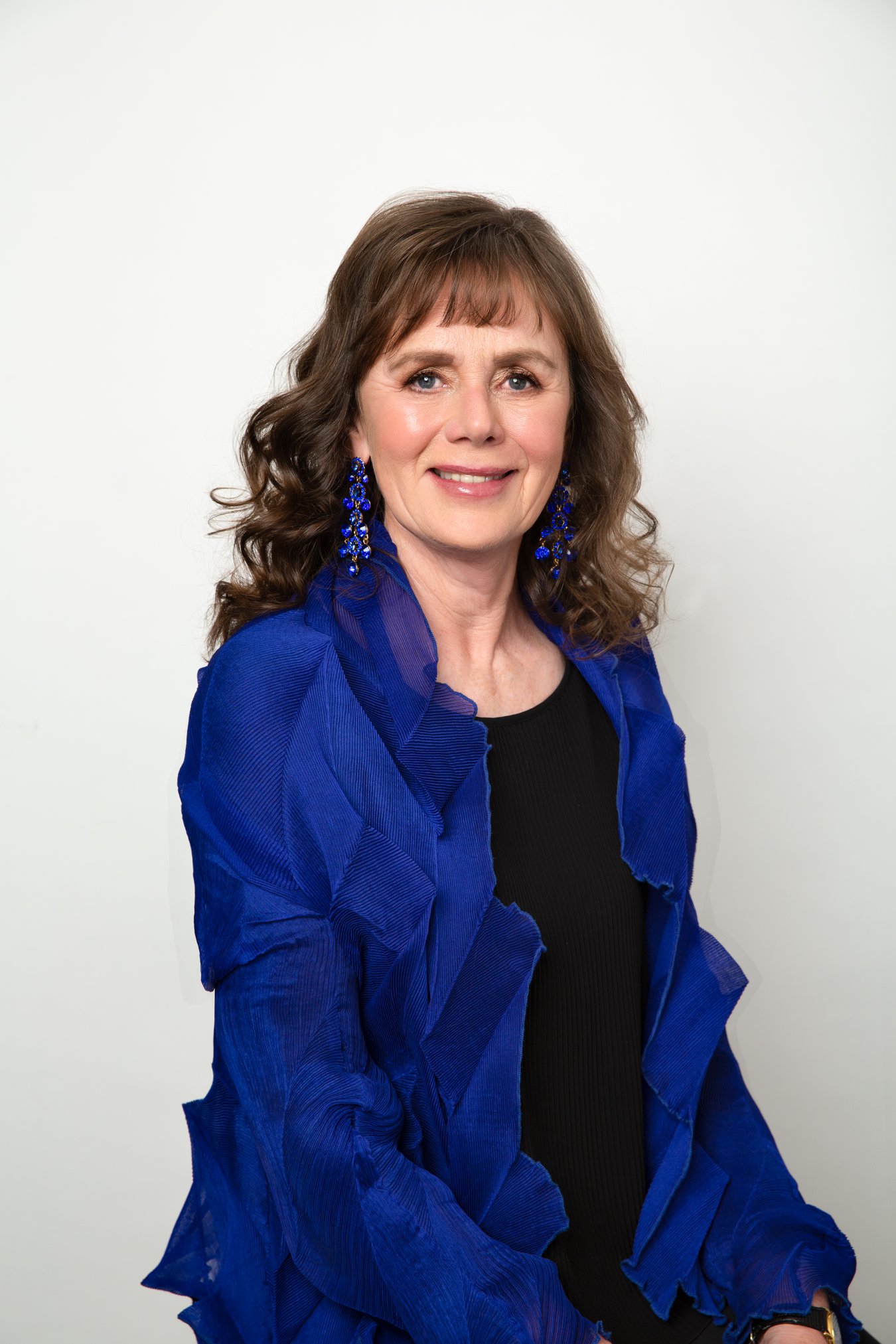
Gabriella Kelly-Davies
Gabriella Kelly-Davies is a biographer and has studied biography and life story writing at the University of Oxford, the Australian National University and Sydney University. She is currently enrolled in a PhD program in biography writing. As part of her PhD she wrote Breaking through the pain barrier. The extraordinary life of Dr Michael J. Cousins, the biography of the trailblazing Australian pain medicine specialist Dr Michael J. Cousins AO.
Gabriella is the President of Life Stories Australia Association, the founder of the life writing business Share your life story and in her spare time runs life story writing groups to help budding life story writers to share their story. Through Share your life story, Gabriella has self-published more than 35 memoirs, life stories, biographies and family histories for CEOs, businesspeople, medical specialists, surgeons, musicians, and journalists.
How did the connection with Dr. Cousins begin for you?
On my twenty-fourth birthday, some thugs had pushed me off my bicycle from their speeding car. The force of impact was so strong it propelled me into the air, and I landed on my head before rolling headfirst down the road. That day heralded the onset of a life of daily migraines.
Fast forward two decades and what followed was 12 years of Dr Michael J. Cousins AO trying every possible treatment to manage my migraines at the Michael J. Cousins Pain Management and Research Centre at Royal North Shore Hospital. I sensed Dr Cousins’ determination in the way he persevered, even when my migraines didn’t respond to treatment. When we finally had a small breakthrough, I felt as if he had given me my life back.
Why did you want to undertake this biography – what was the spark?
It was Michael Cousins’ perseverance, combined with his compassion and kindness, that inspired me to write his biography. I also wanted to show how an individual with vision, determination and courage can move mountains to improve the human condition despite the personal toll, roadblocks and crushing disappointments along the way.
Share your life story – how did this commence?
Every Saturday morning as a child my dad took me to the library. I borrowed biographies of writers, artists and musicians then spent the weekend lying on Palm Beach and Curl Curl reading them. I dreamed of being a biographer when I grew up but that was the 1960s and Dad said, ‘You need to get a “real” job darling.’
I did get a real job, initially as a physiotherapist then later in federal politics, media and communications. But I lived to write, and I wrote life stories and memoirs of friends and people who inspired me as a hobby. During decades of corporate life I dreamed of staying at home and writing life stories rather than wearing a suit and having to travel to the city every day. My dream finally came true when I set up Share your life story the day I retired from corporate life.
Please share examples of works completed so far by your Share your life story
In 2018 I wrote It started with a phone call to some friends … the story of Madeleine Easton, the baroque violinist who set up Bach Akademie Australia, a dedicated Australian Bach ensemble. I love the opening paragraph of Madeleine’s life story.
At exactly 4.30am on 28 December 2015 I was woken up - with an idea - to set up a dedicated Bach orchestra in Australia! This thought was the culmination of months of searching for a way to change my life. For a long time I had felt it was time to shake things up a bit, to do something different. How on earth was I to make this happen?
Another story that profoundly affected me was Sharing knowledge with anyone who wants to learn about the inspirational writer and editor Mukul Pandya, who lives in New Jersey. One of the most crushing experiences of Mukul’s childhood in India inspired the birth of Knowledge@Wharton, the online business analysis journal of the Wharton School of the University of Pennsylvania. From its inception, Mukul was passionate about knowledge being made available via Knowledge@Wharton–for free–for anyone who wants to learn.
And a third book deeply impacted me, We can only solve our planet’s wicked problems if we all do it together. A few weeks after receiving a Public Service Medal honouring David Mason’s contribution to human rights policy and law in Australia during his 26 years at the Human Rights Commission, David was faced with a stark choice – work for a new manager whom David believed lacked the knowledge and skills to do the job competently – or leave. Leave an organisation that for a quarter of a century had fulfilled his need to secure greater social justice for marginalised groups of Australians.
Why did you want to do this work?
I’m passionate about storytelling and helping people share their story. Life writing is a powerful way of communicating what you stand for, the lessons you’ve learned in life, the exciting journeys you’ve embarked upon and the knowledge you’ve gained through life’s ups and downs. I love getting to know fascinating and inspiring people through their life stories—what it’s like to be them living their life; their motivations, experiences, relationships, passions and struggles. It’s a great privilege to read someone’s biography and an even greater privilege to write them.
There has been a lot of growth in peoples’ interest in and sharing of their life stories, our Profiles of the Week are proof of that; from your perspective and experience, why do you think this is happening – because slide machines are gone or the days of 3 or 4 generations under one roof is no more or…?
It was Socrates who said the unexamined life is not worth living. Socrates preferred the death sentence to being unable to examine his life. Many would have you believe the past should stay in the past, but the wise know growth is impossible without reflection and introspection. It is essential to look back into our memories, to understand ourselves in the present.
Sharing your personal story helps you see you’ve lived a worthwhile life. The level of interest your family members display in your history may surprise you. Sharing a life story can deepen connections between family members, and children or grandchildren can feel closer to their parent or grandparent as they experience what it was like for them when you were the same age.
Rather than focusing on what you’ve lost through illness and ageing, sharing your story can renew your vigour as you retell stories and share memories from the past. People who feel bored can feel more motivated, and those with depression may experience relief from symptoms as they share their memories.
Sharing your personal story can help you re-establish a sense of personal power by exploring ways you coped with tough times in the past and identify how you can use these skills today.
Sharing your life story can re-establish life meaning through connection to the past and reassert your feelings of relevance and importance. Passing wisdom and life lessons on to children and grandchildren and being taken seriously can help to improve your self-esteem and confidence.
Are there any guiding starting points you would advise anyone undertaking writing a life story?
One of the most satisfying ways you can share the lessons from your well-lived life is through writing a life story. Prepare by organising your family archive. Come up with an inventory of your reference materials and the places where you can find them. What family documents do you need and where are they stored? Photos and journals can help you remember events, experiences and emotions that you can include in your memoir. When gathering resources, include genealogy papers, letters and other historic items for fact-checking.
Come up with a life timeline to write your life story. Our memories are not linear. We think in puddles; scents, colours and even music stimulates our reminisces. A chronological outline, though, is the best thing you could do to ensure you write a coherent narrative that captures the hearts and minds of your readers.
You can convey spontaneity and vitality in your text without sacrificing order, and a life timeline will enable you to do that. Write down your major life milestones—romances, study, jobs, relocations, getting married and having children, divorce, becoming a grandparent—and the years in which they happened.
You can even group these events in terms of life stage—childhood, teen years, university and so on.
It’s essential to focus your writing on a couple of themes. Create a mud map by jotting down your memories, then see if there are common themes. If you find one or more, think about the people, situations and emotions involved and start writing. You’ll find once you begin, you’ll be flooded with vivid images and memories, making it hard to stop. Ask yourself about the most vital decisions you have made, and the instances where you displayed resilience. What did you learn, and what was the effect on your life afterwards?
You can also think of your best days, your most challenging ones, and what makes you remember these moments. Your career or vocation could also have recurring patterns you could examine through writing. You might also want to reflect on values you want to pass on, and if your life story has instances where you or the people around you show them.
It can be tempting to present yourself in the most positive way possible in your story, but it is important to remember you are writing a true account of your life and not a curriculum vitae. A memoir is not the place for rose-tinted glasses. For your memoir to be authentic, realistic and relatable, temper your fears about presenting yourself as anything other than perfect. Humans are flawed, imperfect beings. That is part of the beauty of human existence. Making mistakes is one way we learn life’s most meaningful lessons. What matters most is how you handled mistakes, setbacks and obstacles. Readers yearn to read about courage, tenacity, resourcefulness and resilience; it is what makes a memoir worthwhile. Always adhere to the truth. Having said that, each person involved in an event or moment will experience it slightly differently. They will each remember aspects of it depending on a multitude of factors such as their age, background, education and experiences. This means they will each have a different conception of the ‘truth’ of a situation or event to others.
Why is it important to share our life stories?
Each generation learns the lessons of the past and one way of doing this is by writing a life story.
Sharing anyone’s life story is a lot of work; how long did Dr. Cousins take and what was involved?
Michael Cousins and his wife Michele generously opened their home to me every Wednesday afternoon for months on end until COVID-19 hit, and we convened using Facetime. Our weekly interviews felt like we were reliving the memoir Tuesdays with Morrie by Mitch Albom. Michael patiently answered my hundreds of questions and provided me with access to his private archives and photo albums. He also opened doors to the pain world, introducing me to people across the globe who, like him, had shaped pain management as we know it today. It took me nearly three years to research and write the book, over 200 interviews and countless rewrites.
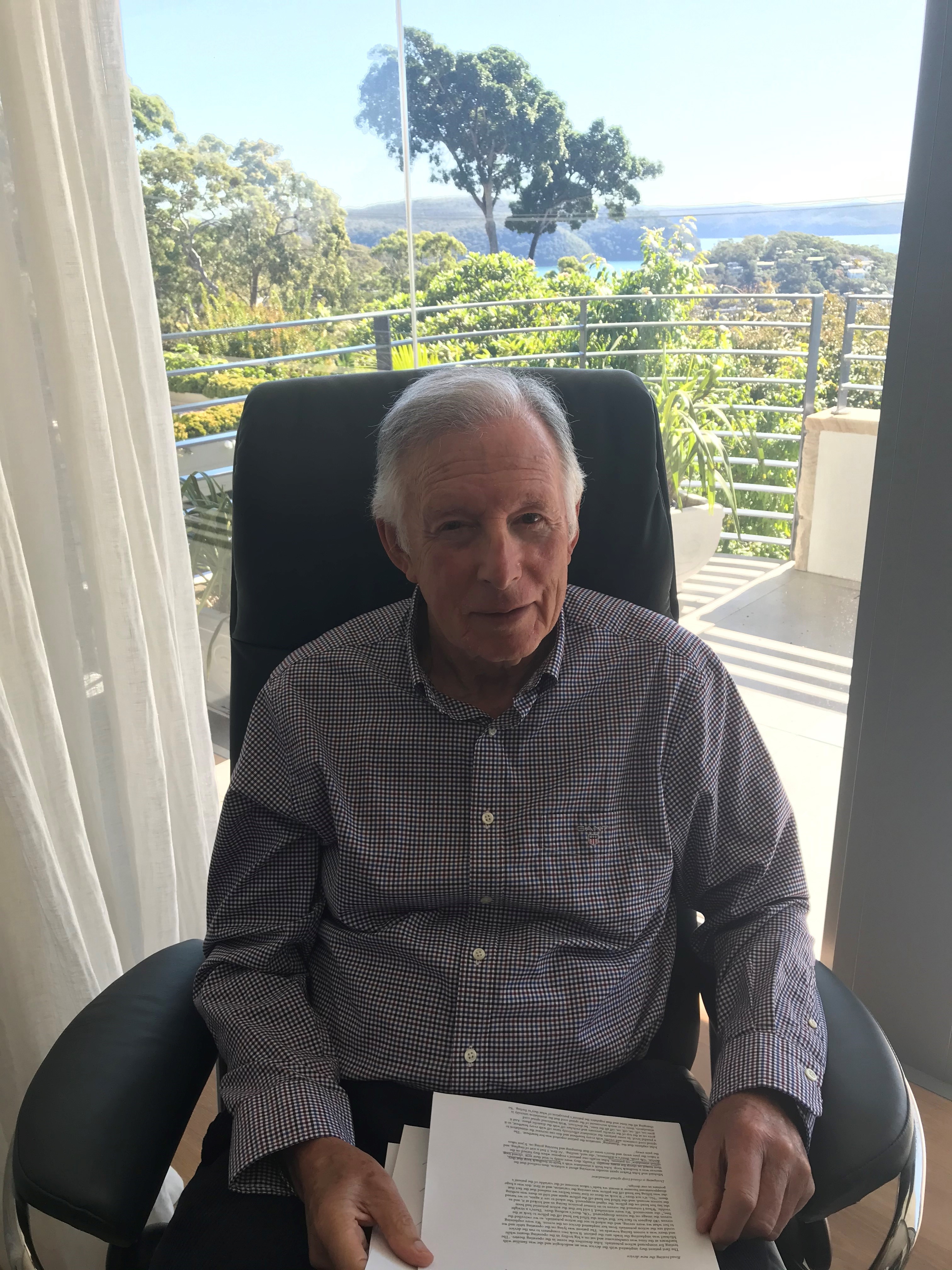
Michael Cousins at home
What stood out as Dr. Cousins most outstanding characteristics?
Michael Cousins exemplifies a person with vision, compassion, indefatigable energy and an almost superhuman determination and how they can move mountains to bring about reform that benefits millions of people.
In the 1670s Sir Isaac Newton wrote in a letter to his friend Robert Hooke, ‘If I have seen further, it is by standing on the shoulders of giants.’ While writing Breaking through the pain barrier I often thought about this statement. I thought that by examining the life of a giant like Michael Cousins, I might inspire people who were searching for their own way of making a difference in the world to forge ahead despite professional jealousy, inertia and immense personal sacrifice.
Are you happy with this work?
I will be happy with Breaking through the pain barrier if it inspires the 3.4 million Australians living with chronic pain as they hear the stories of people like them whom Michael Cousins helped. He restored their hope and, in many cases, saved their life after decades of living in intolerable pain.
I will also be pleased if the biography inspires anyone who longs to bring about change and those curious about reaching the heights of human endeavour. There are many books written about climbers of the tallest peaks, but there is also much to learn from studying those who have climbed mountains of inertia and changed societal and cultural responses to how our own bodies are treated by fellow human beings.
I’m donating a portion of the proceeds from book sales to pain research to enable Australia’s world-class researchers to continue Michael Cousins’ ground-breaking work. I’m also hoping the book will provide a platform for me to continue Michael Cousins’ advocacy for people living with pain. While governments must provide more funding for pain management services, all of us can play a part in reducing the stigma and social isolation of chronic pain by embracing compassion, empathy and acceptance of one another.
Breaking Through the Pain Barrier. The extraordinary life of Dr Michael J. Cousins is available at hawkeyebooks.com.au and bookstores.
Find out more about Painaustralia at www.painaustralia.org.au
